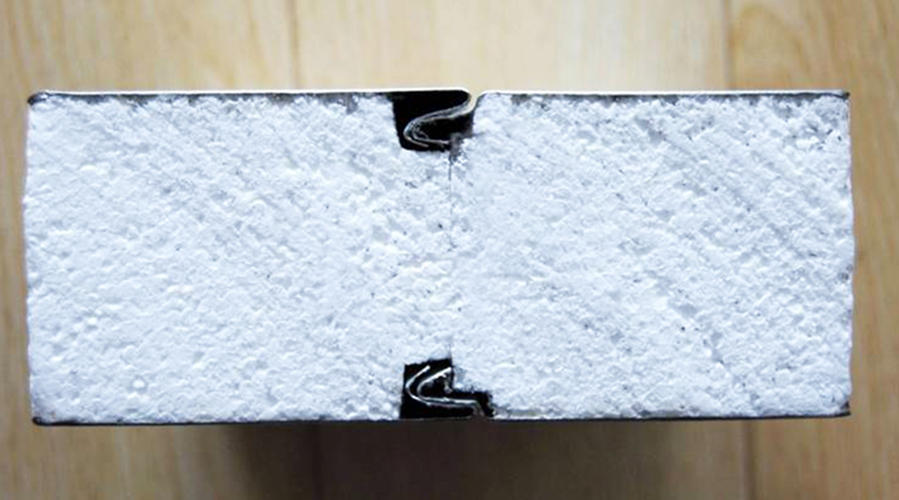Sandwich panels have become increasingly popular due to their excellent thermal insulation, lightweight properties, and cost - effectiveness. Among them, NF EPS (New - generation Flame - retardant Expanded Polystyrene) sandwich panels and traditional EPS (Expanded Polystyrene) sandwich panels are two common types.
★Material Composition and Structure
EPS sandwich panels consist of two outer metal sheets (galvanized steel or aluminum) and an EPS core made by expanding polystyrene beads with a blowing agent. Its closed - cell structure provides good thermal insulation. The EPS core density is 10 - 24 kg/m³, and panel thickness can be customized from 50 - 200 mm.

NF EPS sandwich panels have a similar structure, but their core is a new - generation flame - retardant EPS. Modified from traditional EPS by adding flame - retardant additives, it retains good thermal insulation and has improved fire - resistance. The density is similar to traditional EPS, and there are various options for panel thickness.

★Performance Comparison
(1)Thermal Insulation: Both EPS and NF EPS sandwich panels offer good thermal insulation. EPS has a thermal conductivity of 0.038 - 0.042 W/(m·K), and NF EPS, after adding flame - retardant agents, has a conductivity of 0.04 - 0.045 W/(m·K). They can significantly reduce heat transfer compared to traditional brick walls, suitable for energy - saving buildings.
(2)Fire - Resistance: EPS is combustible, burning rapidly and releasing heat and toxic smoke. NF EPS, in contrast, is non - combustible or flame - retardant, greatly improving fire - resistance as shown in fire tests.
(3)Mechanical Properties: Both types have sufficient strength for general building structures. The two - layer metal sheets provide tensile and compressive strength, and the core can bear load and deformation. Their bending strengths are similar, around 15 - 20 MPa, though additional reinforcement may be needed in high - load scenarios.
★Application Scenarios
EPS Sandwich Panels: With good insulation and low cost, they are used in low - rise residential, temporary, and simple industrial buildings like rural self - built houses and construction - site temporary facilities.
NF EPS Sandwich Panels: Due to excellent fire - resistance, they are suitable for high - rise, public buildings, and places with high fire - safety needs such as office buildings, hospitals, and shopping malls.
★ Conclusion
In summary, both NF EPS and EPS sandwich panels have distinct features and application benefits. EPS panels are cost - efficient, fitting for projects with normal insulation needs and low fire - safety requirements. NF EPS panels, renowned for their excellent fire - resistance, are ideal for high - fire - safety projects. Construction units should weigh project requirements, budget, and safety regulations to select the most suitable panels.


 online service
online service +86-592-6095031
+86-592-6095031 manager@yumisteel.com
manager@yumisteel.com Alina_Yuki
Alina_Yuki +8613559086380
+8613559086380 +8615860744964
+8615860744964